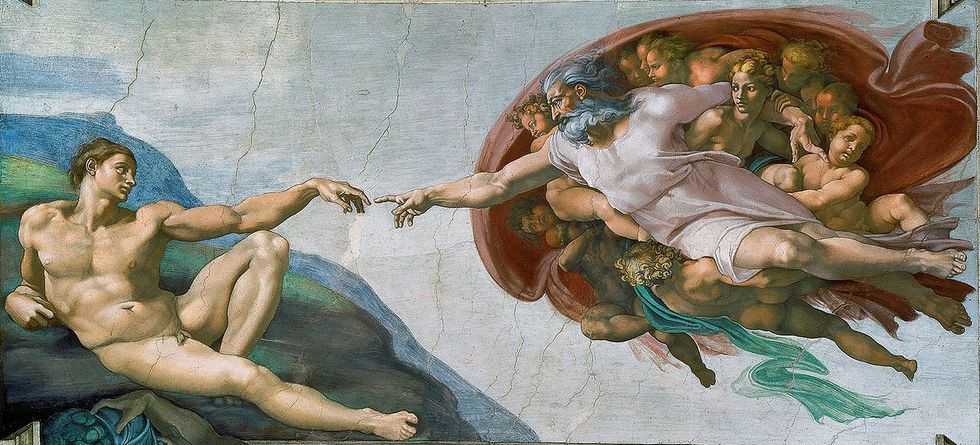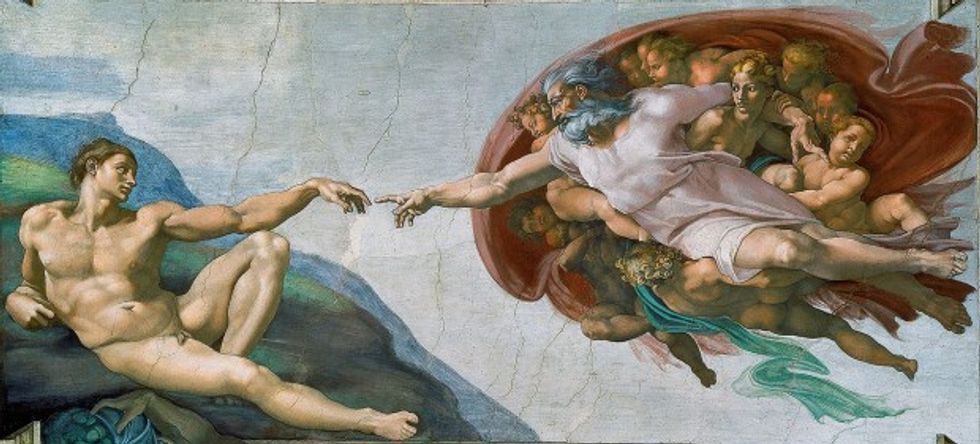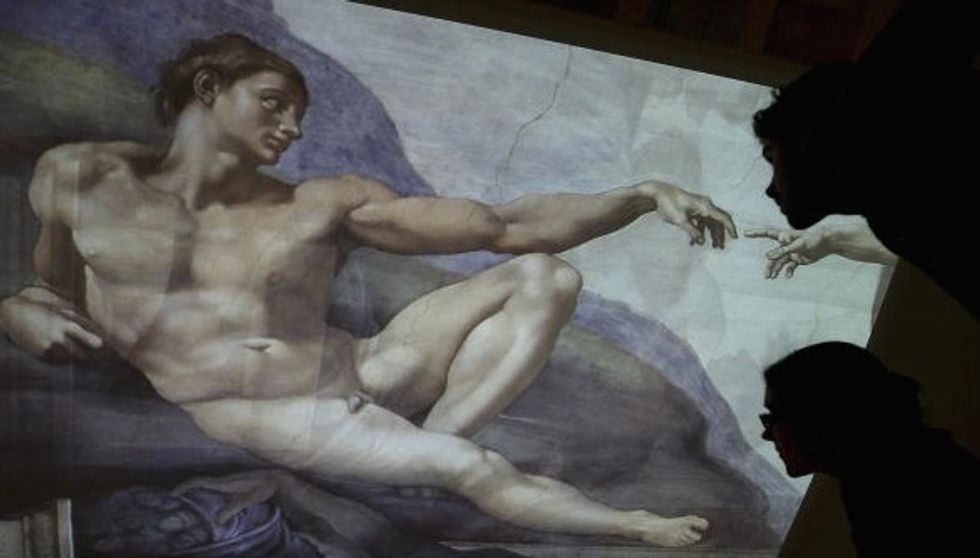
Image source: Wikimedia

Though it's hundreds of years old, research is giving us some new insight into the "The Creation of Adam" by Michelangelo and into the creative genius of one of history's most well-known artists.
On the ceiling of the Sistine Chapel within the Vatican with his finger reaching out toward the hand of God, the 16th century Italian artist's depiction of Adam is one of the most iconic and well-known works of art of all time.

Analysis of this fresco published in the July issue of the journal Clinical Anatomy provides mathematical evidence that Michelangelo used the golden ratio, which leads the study authors to believe "the beauty and harmony recognized in all Michelangelo's works may not be based solely on his knowledge of human anatomical proportions, but that the artist also probably knew anatomical structures that conform to the [golden ratio] display greater structural efficiency."
The idea of famous artists employing the golden ratio is not necessarily new, but the study authors wrote their analysis provides the first published evidence that Michelangelo's work incorporates this concept. This, the study authors explained, is the "proportion of lengths of line segments, where the ratio between the lengths of the longer and shorter lines is equal to that of the ratio between the combined lengths of the two lines and the length of the longer line."
"We believe that this discovery will bring a new dimension to the great work of Michelangelo," Dr. Deivis de Campos, one of the study authors, said in a statement.

The study authors used Image Pro Plus Software 6.0 to mathematically analyze the artist's work, which they noted in the study's abstract is also speculated to hide the "image of the brain," helping fuel debate over "whether the frescoes merely represent the teachings of the Catholic Church at the time or if there are other meanings hidden in the images."
They called their findings "astounding" and noted that the fingers of God and Adam are also aligned with other images in the Sistine Chapel.
The study authors acknowledge that opinions of their work will "certainly vary," but they wrote that they hope their linking the golden ratio to Michelangelo's art will lead to further research into historical works that could contribute to more information on the history of anatomy.
(H/T: Science Daily)